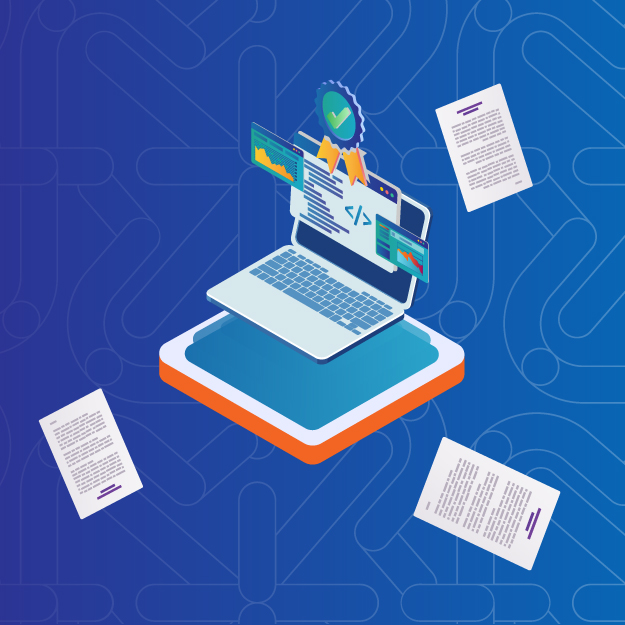Government agencies are inundated with a vast amount of daily Governance, Risk, and Compliance (GRC) tasks and processes. Achieving regulatory compliance, an arduous process, can take up precious time that could be reallocated to other business-critical missions.
Continuous controls monitoring (CCM) is one solution. CCM leverages AI and extreme automation to help cut down on manual processes, allowing agencies to overcome regulatory hurdles, supercharge their staff, and make better risk-based decisions with fast, cost-effective automations.
Improving the Compliance Process
Creating a quality compliance report comes with heavy, manual processing time. CCM can help significantly by taking away some of the cumbersome brunt work, cutting 60-80% of the manual tasks required by GRC programs.

It can also help overcome hurdles to reaching valuable security authorizations. Completing an Authorization to Operate (ATO) package can take roughly six months to finish — but that process can be reduced to two weeks with the right CCM platform. CCM also gives agencies a leg up with gaining Continuous Authorization to Operate (cATO) by leveraging OSCAL, a machine-readable format that standardizes security control documentation and enables automated validation.
The Time-Saving Capabilities of Machine Learning and AI
In the past year, advances in machine learning (including large language models and generative AI) have created exciting new possibilities for GRC teams. AI and machine learning (ML) can offer everything from better data analysis to proactive risk management to a major reduction in manual processes. Here are a few of the most compelling use cases for AI-enabled GRC:
- Help employees proactively monitor traffic
- Review code for errors unlikely to be caught by the human eye
- Explain complex controls and procedures in everyday language, bridging knowledge gaps
- Generate accurate, up-to-date documentation in one click
Overall, AI allows agencies to move faster, with more accuracy, and with better visibility. To free up staff to complete mission-critical objectives, agencies should create their own AI/ML usage strategies and implement them within a Compliance as Code framework.
How RegScale’s CCM Leverages Compliance-Trained AI
RegScale’s AI-enabled platform, RegML, combines CCM and leading large language (LLM) tools to streamline compliance management with intelligent automation and precision. This approach improves compliance by significantly reducing manual labor and costs. It also provides user-friendly summaries and guidance and improves accuracy and precision in documentation, freeing up staff to focus on core business objectives.
RegML has four main AI features:
- AI Extractor, which automatically derives compliance documentation from existing policies and procedures.
- AI Explainer, which is designed to demystify control statements by providing users with simple explanations of intricate controls.
- AI Author, which helps draft control implementation statements in the context of relevant regulations and requirements. This process allows writers to focus on editing a draft, leading to fewer errors and better accuracy.
- AI Auditor, which identifies gaps in controls and provides suggestions for improvement. This frees up teams to work on more critical tasks like fixing gaps and implementing controls.
CCM and the Future
Today, more and more work is being done in the cloud. As data becomes ephemeral and serverless, cybersecurity has become more important than ever — as have the mandatory frameworks governing it. Meanwhile, regulations such as NIST’s Secure Software Development Framework (SSDF), the Digital Operational Resilience Act (DORA), the Security and Exchange Commission (SEC) rules, Cybersecurity and Infrastructure Agency (CISA) mandates, and the European Union’s AI Act have or are predicted to undergo changes.
These shifting frameworks only make CCM more integral, as its AI features allow users to ensure that they are thoroughly compliant at every step of the process. By freeing time for additional tasks, and by maintaining adherence to changing regulations, CCM enables organizations to improve their GRC programs and streamline their operations.
To learn more about how RegScale’s CCM platform provides a layer of security around AI usage, watch its webinar How AI is Revolutionizing Government Compliance.
Carahsoft Technology Corp. is The Trusted Government IT Solutions Provider, supporting Public Sector organizations across Federal, State and Local Government agencies and Education and Healthcare markets. As the Master Government Aggregator for our vendor partners, including RegScale, we deliver solutions for Geospatial, Cybersecurity, MultiCloud, DevSecOps, Artificial Intelligence, Customer Experience and Engagement, Open Source and more. Working with resellers, systems integrators and consultants, our sales and marketing teams provide industry leading IT products, services and training through hundreds of contract vehicles. Explore the Carahsoft Blog to learn more about the latest trends in Government technology markets and solutions, as well as Carahsoft’s ecosystem of partner thought leaders.


